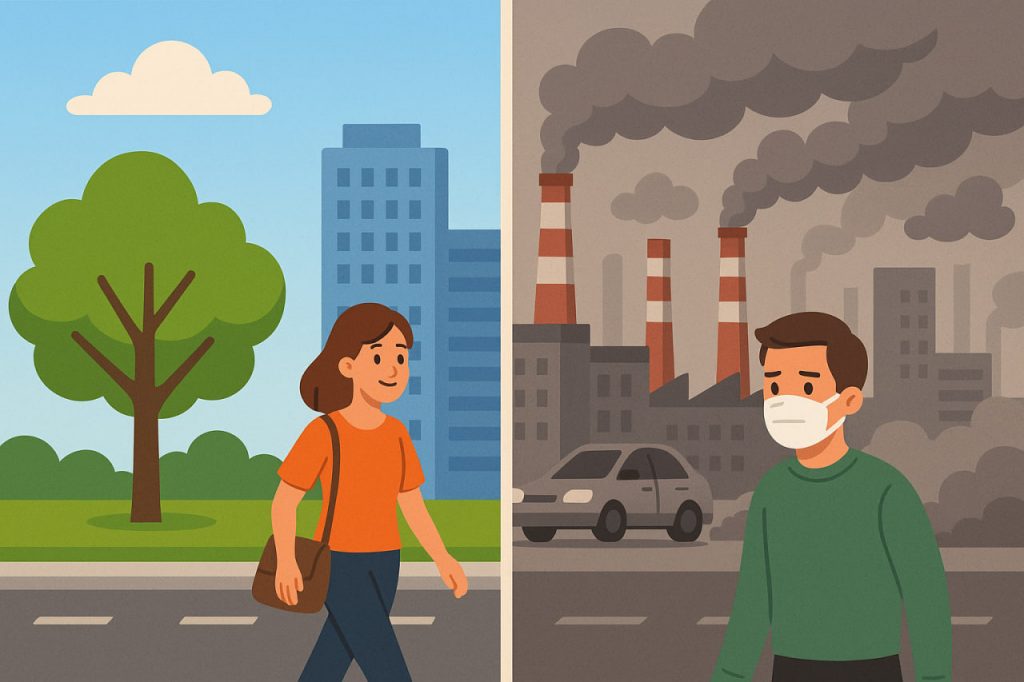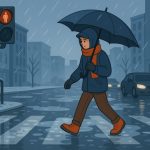Air pollution is one of the most serious environmental problems of the modern world. Though often invisible, it affects every breath we take. Polluted air damages ecosystems, harms human health, and accelerates climate change. Understanding its causes, consequences, and solutions is essential if humanity hopes to protect both the planet and future generations.
What Is Air Pollution?
Air pollution occurs when harmful substances — gases, particles, or biological materials — enter the atmosphere in concentrations high enough to cause damage. These pollutants can be natural, like volcanic ash or pollen, but most are the result of human activity: burning fuel, industrial emissions, or agricultural chemicals. The most dangerous components include carbon monoxide (CO), nitrogen oxides (NOₓ), sulfur dioxide (SO₂), ozone (O₃), and fine particles known as PM2.5 that penetrate deep into the lungs.
Major Sources of Pollution
- Transportation: Cars, trucks, ships, and planes emit large quantities of exhaust gases.
- Industry and power plants: Burning coal, oil, and natural gas releases toxic compounds.
- Agriculture: Fertilizers, pesticides, and animal waste produce ammonia and methane.
- Household activities: Heating with wood or coal and using chemical cleaners add indoor pollutants to the air.
Urban areas suffer the most, where millions of engines and factories continuously release emissions into confined spaces.
Impact on Human Health
Air pollution contributes to heart disease, lung cancer, asthma, and premature death. According to the World Health Organization, around 7 million people die annually due to polluted air. Long-term exposure also affects the brain, immune system, and even unborn children. Children and the elderly are particularly vulnerable, as their bodies are less able to filter harmful particles.
Environmental Consequences
Polluted air doesn’t stay local — winds carry toxins across borders and oceans. Sulfur and nitrogen oxides lead to acid rain, which damages forests, lakes, and buildings. High ozone levels destroy crops and reduce biodiversity. In the upper atmosphere, greenhouse gases trap heat, causing global warming and extreme weather patterns. Even remote areas like the Arctic now show traces of industrial pollution.
Solutions and Hope
Despite the scale of the problem, progress is possible. Transitioning to renewable energy, improving public transportation, and supporting green urban planning can drastically cut emissions. Individuals can help by reducing car use, saving energy, recycling, and planting trees. Many cities already see improvements after adopting air quality laws and clean technology.
Interesting Facts
- Breathing polluted air for one day in a major city can be equivalent to smoking several cigarettes.
- Trees and oceans absorb about 30% of global CO₂ emissions every year.
- Some species of moss are used as natural air quality indicators.
- The cleanest air on Earth is found over Antarctica and the South Pacific Ocean.
Glossary
- PM2.5 — fine particles smaller than 2.5 micrometers that can enter the bloodstream.
- Ozone (O₃) — a gas that protects life in the upper atmosphere but is harmful at ground level.
- Acid rain — precipitation made acidic by air pollutants.
- Greenhouse gases — gases that trap heat in Earth’s atmosphere.
- Renewable energy — energy from sources that do not deplete, such as wind, solar, and water.


